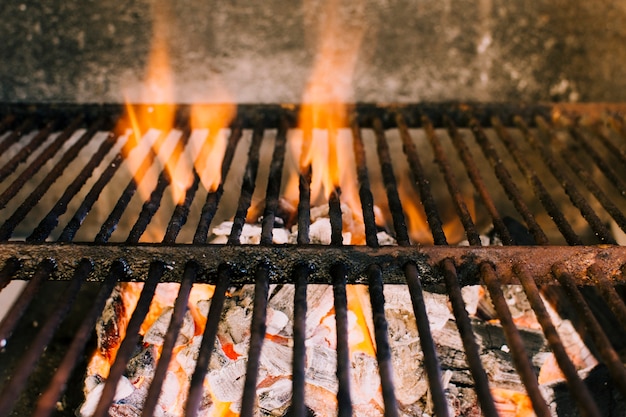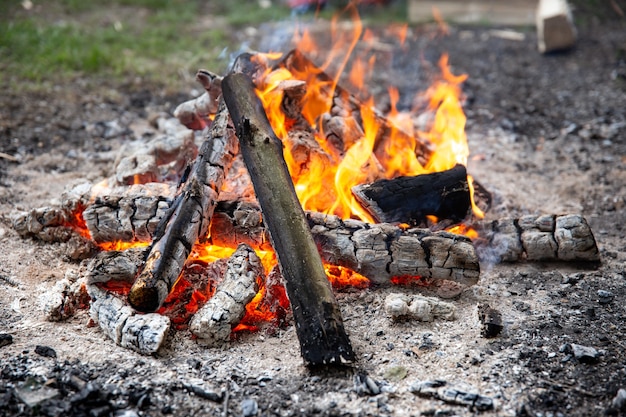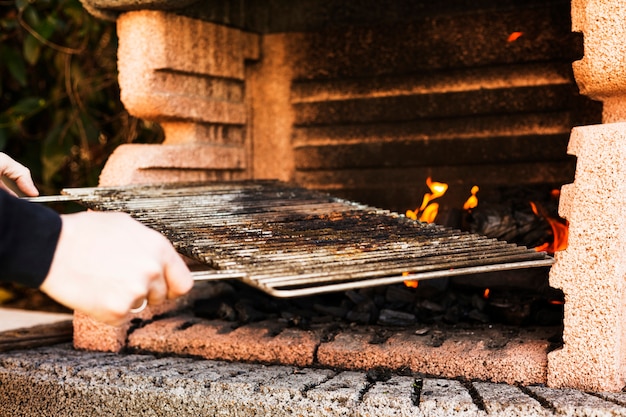How long should fish sit out before grilling?
If you’re planning a barbecue and have fish on the menu, you may be wondering how long you should let it sit out before grilling. Proper handling of fish is essential to ensure food safety and maximize flavor. In this article, we will explore the ideal time for fish to sit out before hitting the grill, offering tips and guidelines for a successful grilling experience.
Why is proper handling important?
Proper handling of fish is crucial to prevent the growth of harmful bacteria and ensure that your grilled fish is both safe to eat and delicious. Fish is highly perishable and can spoil quickly if not handled correctly. Leaving fish out at room temperature for too long can result in bacterial growth, leading to foodborne illnesses such as salmonella or listeria.
So, how long should fish sit out before grilling?
“To minimize the risk of food poisoning, it is recommended to keep fish refrigerated until just before cooking. Fish should not be left out at room temperature for more than 2 hours.”
Tips for preparing fish for grilling
Here are some guidelines to follow when preparing fish for grilling:
1. Purchase fresh fish:
Choose fresh fish from a reputable source. Look for clear eyes, bright red gills, and shiny skin. Fresh fish has a mild oceanic smell, while spoiled fish has a strong, unpleasant odor.
2. Keep it chilled:
As soon as you bring the fish home, store it in the refrigerator at a temperature below 5°C (41°F). If you won’t be grilling the fish immediately, it’s best to keep it in the fridge until you are ready.
3. Wrap it properly:
When storing fish in the refrigerator, place it in an airtight container or wrap it tightly in plastic wrap or aluminum foil to prevent any odor or cross-contamination with other foods.
4. Timing is key:
Remove the fish from the refrigerator just before you are ready to season and grill it. Keeping it at room temperature for no more than 30 minutes to an hour is generally safe.
Additional considerations
While it is generally advisable to keep fish refrigerated until just before grilling, there are a few exceptions for certain preparation techniques:
- If you plan to marinate the fish before grilling, allow it to sit in the marinade in the refrigerator for the recommended time. However, discard any leftover marinade that has come into contact with raw fish.
- For hot smoking, some recipes may require leaving the fish sitting at room temperature for a short period before placing it in the smoker. Follow the recipe instructions for specific guidance.
By following these guidelines and practicing proper food safety measures, you can enjoy delicious grilled fish while minimizing the risk of foodborne illnesses. Remember, when in doubt, it is always better to err on the side of caution and prioritize food safety.
Can you cook fish on a gas BBQ?
Many people love the idea of cooking fish on a barbecue, but there is often confusion about whether you can do so on a gas BBQ. The good news is that yes, you can cook fish on a gas BBQ! In fact, it can be a great way to prepare seafood and enjoy the smoky flavors that grilling provides.
Why choose a gas BBQ for cooking fish?
A gas BBQ offers several advantages when it comes to cooking fish. Firstly, it provides precise temperature control, allowing you to easily adjust the heat to suit different types of fish. This is particularly important as fish can be delicate and requires gentle cooking to prevent it from drying out or falling apart.
Secondly, a gas BBQ heats up quickly, saving you time and allowing you to get your fish on the grill faster. This is especially handy when you’re preparing a quick and easy meal. Additionally, gas BBQs typically provide even heat distribution, preventing hot spots on the grill that can cause uneven cooking.
How to cook fish on a gas BBQ
Here are some tips on how to cook fish perfectly on a gas BBQ:
- Preheat the gas BBQ on high for 10-15 minutes before cooking to allow the grates to heat up.
- Clean and oil the grates to prevent the fish from sticking.
- Season the fish with your choice of marinade, herbs, or spices.
- Place the fish directly on the preheated grill.
- Cook the fish for a few minutes on each side, depending on the thickness and type of fish.
- Use a fish spatula or a wide metal spatula to flip the fish gently to avoid breaking it.
- Test for doneness by inserting a fork or a meat thermometer into the thickest part of the fish. It should flake easily and have an internal temperature of 145°F (63°C).
“A gas BBQ offers several advantages when it comes to cooking fish. Firstly, it provides precise temperature control, allowing you to easily adjust the heat to suit different types of fish.”
Best fish for grilling on a gas BBQ
When it comes to choosing fish for grilling on a gas BBQ, opt for species that hold together well, such as salmon, tuna, swordfish, halibut, or sea bass. These fish are firm and won’t fall apart easily during grilling.
Tips for flavorful grilled fish
To enhance the flavor of your grilled fish, consider trying these tips:
- Marinate the fish before grilling, using ingredients like lemon juice, olive oil, garlic, and herbs.
- Add wood chips or soaked cedar planks to the gas BBQ to infuse the fish with smoky flavors.
- Serve the grilled fish with a squeeze of fresh lemon juice, a sprinkle of sea salt, and a drizzle of extra-virgin olive oil.
Cooking fish on a gas BBQ is not only possible but also an excellent way to enjoy delicious and healthy seafood. With the right technique and some flavorful additions, you can create mouthwatering grilled fish dishes that will impress your family and friends.
Is it better to cook fish from frozen or defrost?
Cooking fish can be a delightful and healthy option for a meal. But when it comes to preparing fish, one question often arises: is it better to cook the fish from frozen or defrost it first? Let’s explore the advantages and disadvantages of each method to help you decide which approach suits your needs.
Cooking Fish from Frozen
Advantages: Cooking fish directly from frozen can be a convenient and time-saving option. It eliminates the need for advance planning and allows you to prepare a quick meal without waiting for the fish to thaw. This method also helps to retain the fish’s moisture, preventing it from drying out during cooking.
Disadvantages: While cooking fish from frozen is convenient, it may require a slightly longer cooking time compared to thawed fish. It can also be more challenging to season the fish evenly when frozen. Additionally, some delicate fish varieties may not cook evenly if cooked from frozen, resulting in a less desirable texture.
Tip: When cooking fish from frozen, ensure that it is fully cooked by checking the internal temperature with a food thermometer. The fish should reach a minimum temperature of 145°F (63°C) for safe consumption.
Defrosting Fish before Cooking
Advantages: Defrosting fish before cooking allows for better flavor absorption and even seasoning. It also ensures that the fish cooks evenly, resulting in a more appealing texture. Defrosting can also reduce the overall cooking time, allowing for quicker and more controlled preparation.
Disadvantages: Defrosting fish requires planning ahead, as it usually takes several hours, or overnight, in the refrigerator. This method may not be suitable for last-minute meal preparations. Moreover, if not done properly, defrosting fish can lead to moisture loss and potential bacterial growth if left at room temperature for too long.
Tip: To defrost fish safely, place it in a sealed bag or container and let it thaw in the refrigerator. Alternatively, you can use the defrost setting on your microwave if you’re short on time. Avoid defrosting fish at room temperature to minimize the risk of foodborne illnesses.
In conclusion, both methods have their advantages and disadvantages. Cooking fish from frozen is convenient and helps retain moisture but may require longer cooking times. On the other hand, defrosting fish beforehand allows for better seasoning and texture, but requires planning ahead. Whichever method you choose, remember that proper cooking techniques and ensuring the fish reaches the appropriate internal temperature are crucial for safe consumption.
Table: Cooking Times for Frozen Fish
| Fish Type | Cooking Time (approx.) |
|---|---|
| Cod | 25-30 minutes |
| Salmon | 20-25 minutes |
| Haddock | 20-25 minutes |
List of Tips:
- If you choose to cook fish from frozen, consider using a slightly lower cooking temperature to ensure it cooks evenly without drying out.
- For delicate fish fillets, such as sole or flounder, defrosting before cooking is generally recommended to preserve their delicate texture.
- Remember to follow any specific instructions provided on the packaging of your frozen fish for optimal results.
What Happens if You Cook Frozen Fish Without Thawing?
Introduction
Cooking frozen fish without thawing it first is a common practice for many busy individuals. However, it’s essential to understand the consequences of this method on the taste, texture, and overall quality of the cooked fish. In this article, we’ll explore what happens when you cook frozen fish without thawing and provide some tips to ensure the best results.
The Impact on Taste and Texture
When frozen fish is cooked without thawing, it tends to retain more moisture. This can result in a slightly different texture compared to thawed fish. While some may prefer the juiciness of frozen-fish-cooked meals, others may find it less desirable.
Pro tip: If you opt for cooking frozen fish without thawing, consider adjusting the seasoning or marinade to account for the potential differences in taste and texture.
Longer Cooking Time
Cooking frozen fish directly increases the cooking time, as the fish needs to defrost as it cooks. This extended cooking period can lead to overcooking, which can result in dry and bland fish.
Pro tip: If you’re planning to cook frozen fish without thawing, be sure to monitor the cooking time closely and adjust accordingly to prevent it from becoming overcooked.
Retaining Nutritional Value
While cooking frozen fish without thawing may affect the taste and texture, it doesn’t significantly impact the nutritional value of the fish. Fish is known for being a good source of omega-3 fatty acids and protein, both of which are retained during the cooking process.
Pro tip: To maximize the nutritional value, choose high-quality frozen fish that has been flash-frozen to preserve its freshness and nutrients.
Cooking Frozen Fish Safely
It’s important to cook frozen fish thoroughly to ensure food safety and reduce the risk of foodborne illnesses. Use a food thermometer to check the internal temperature, which should reach 63°C (145°F) for most types of fish.
Did you know? Thawing fish before cooking allows for more even cooking and helps prevent the growth of bacteria. So, it’s generally recommended to thaw fish prior to cooking.
Pro tip: If you’re short on time and need to cook frozen fish without thawing, consider using cooking methods like baking or grilling, as they allow for more even cooking.
In Summary
Cooking frozen fish without thawing can result in differences in taste, texture, and cooking time. While it may be a convenient option for some, it’s important to take precautions and adjust cooking techniques to ensure the best results. Remember to thaw fish properly for optimal taste, safety, and overall culinary experience.



